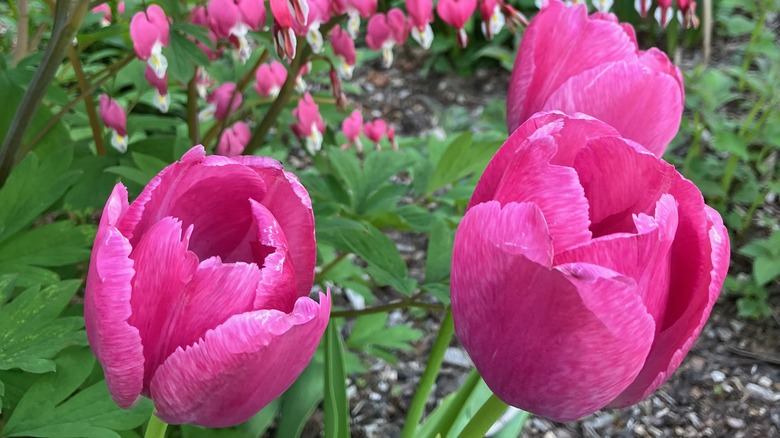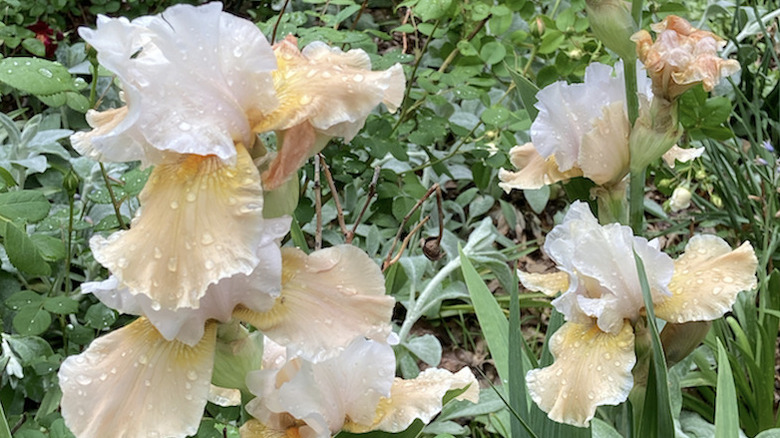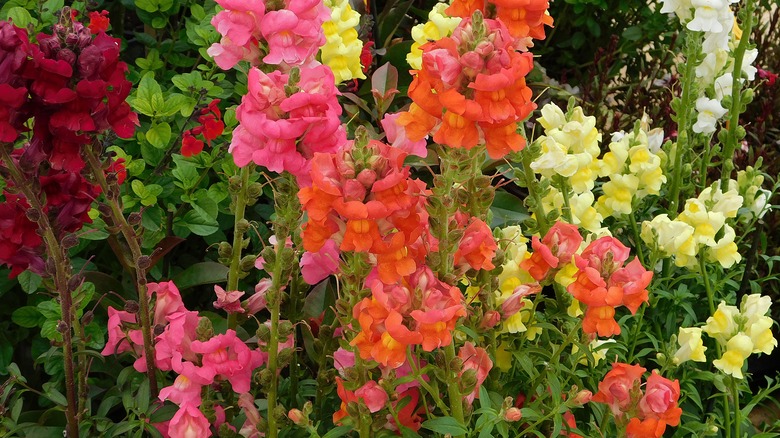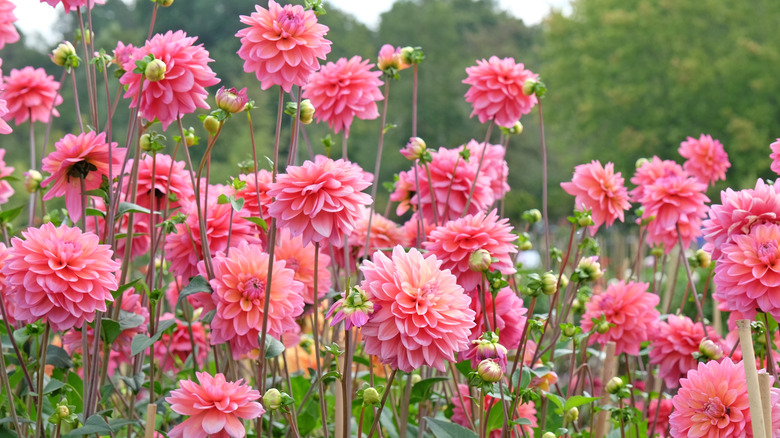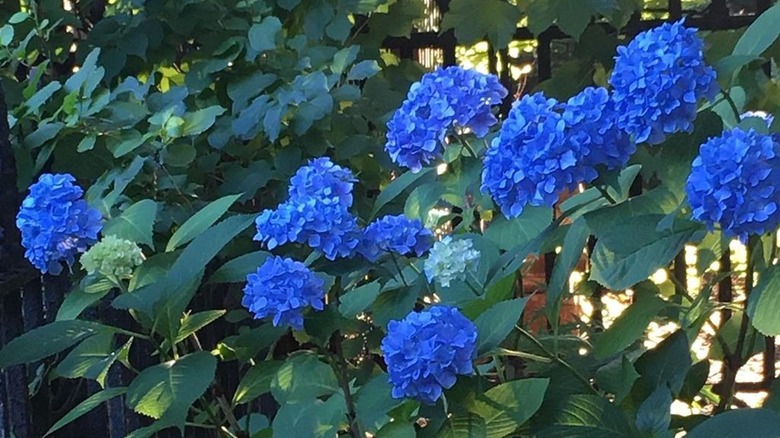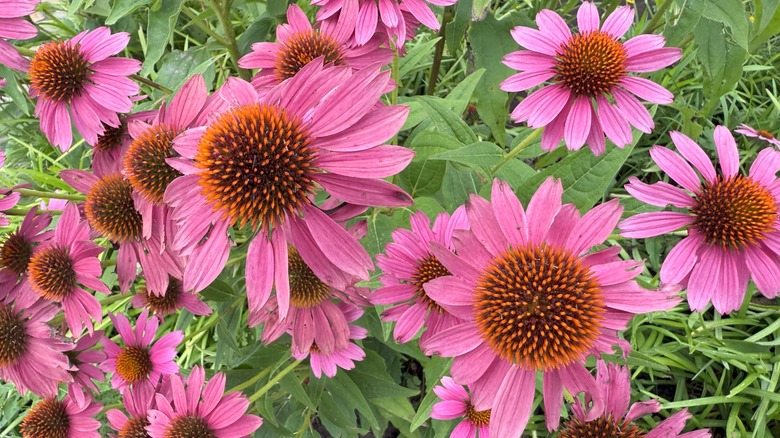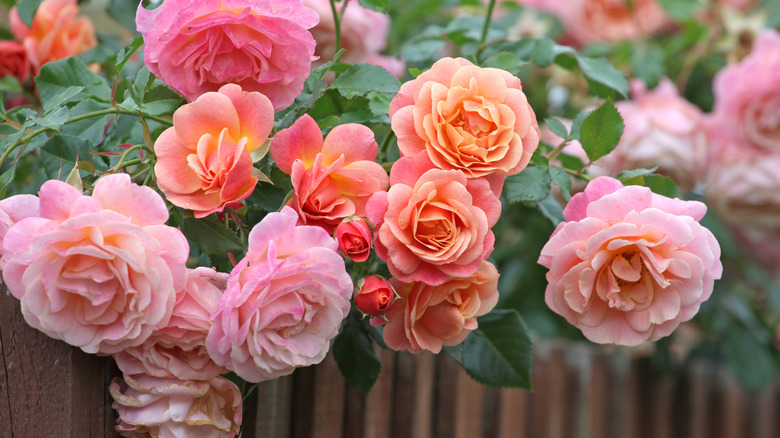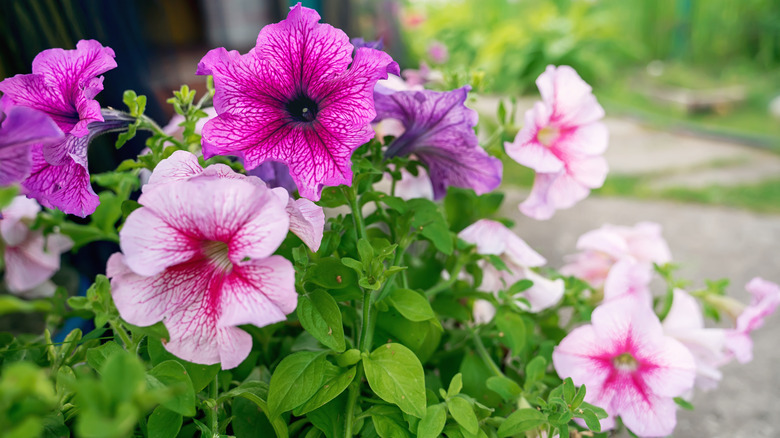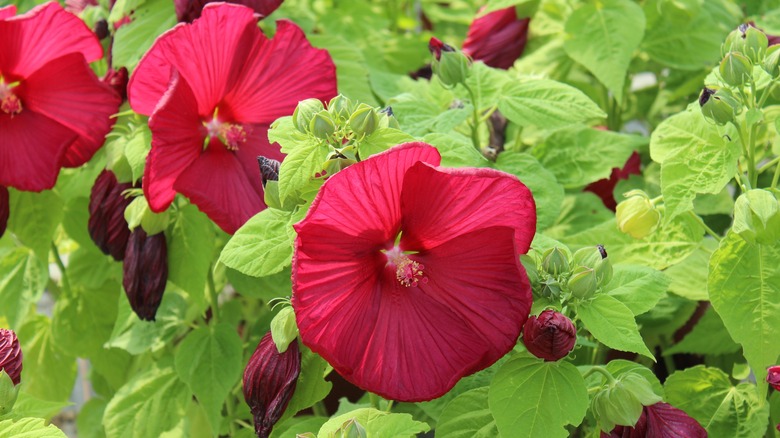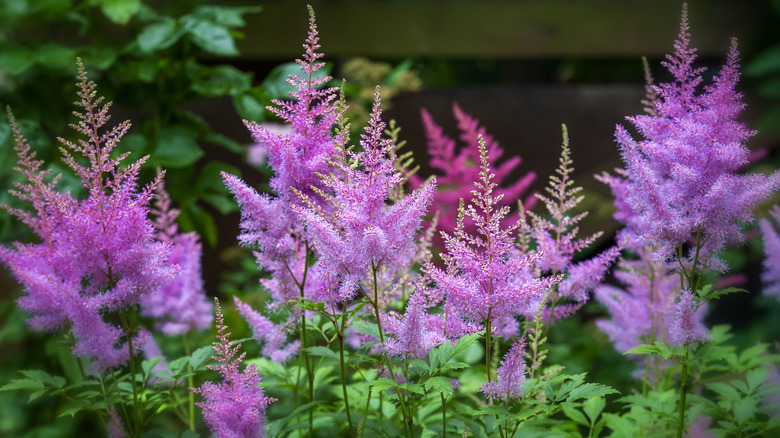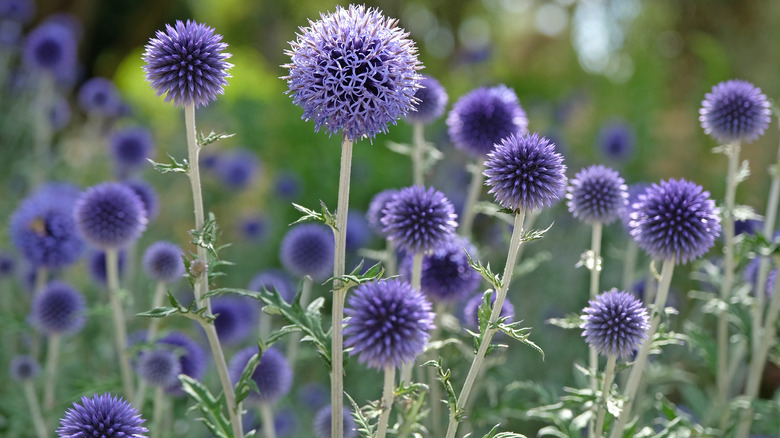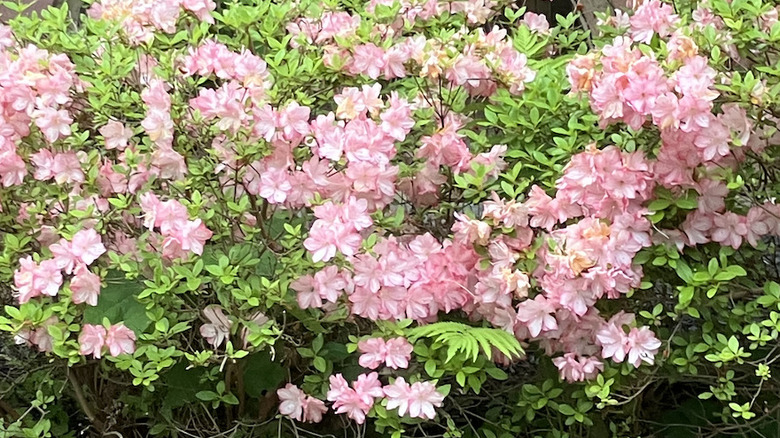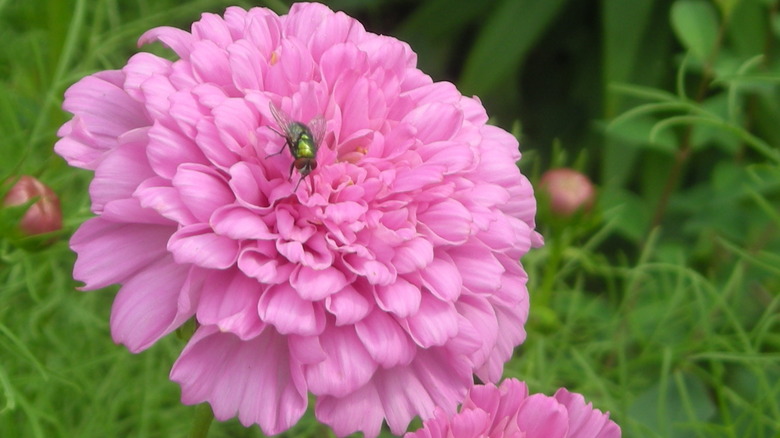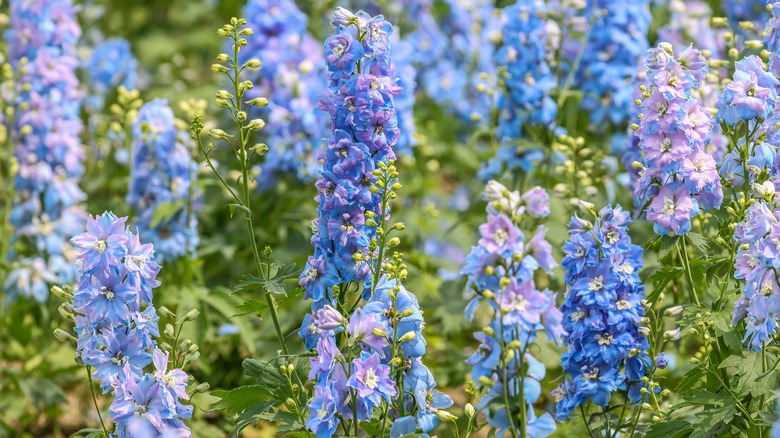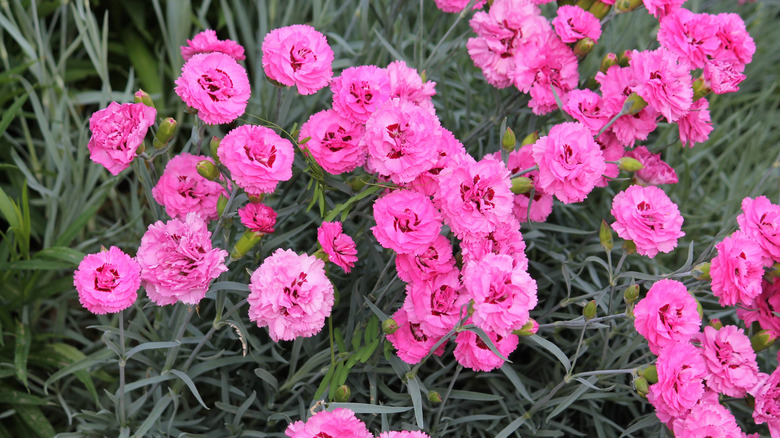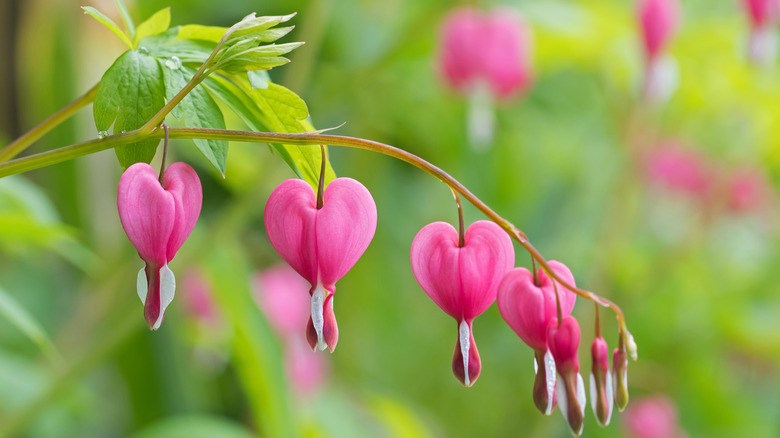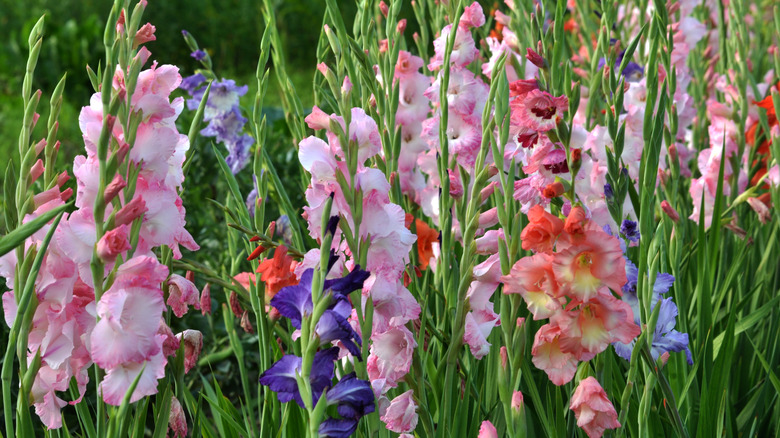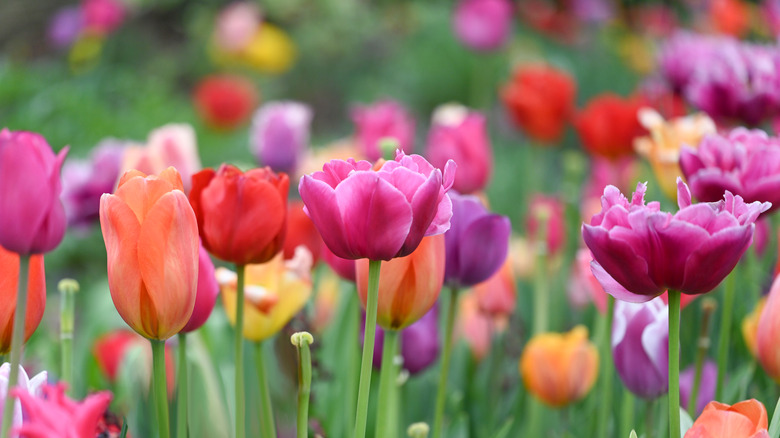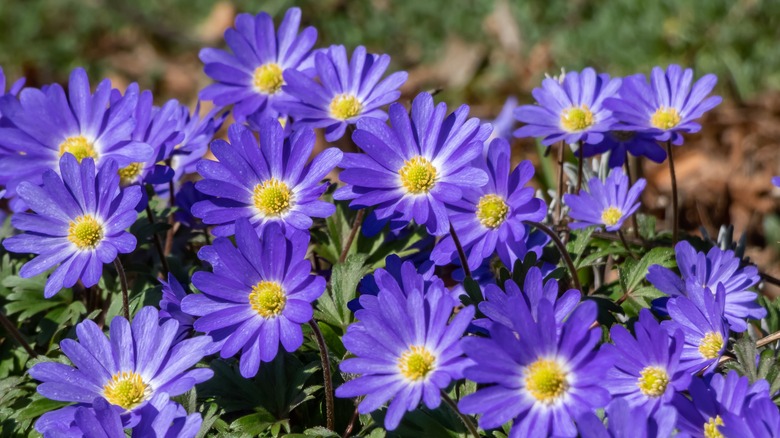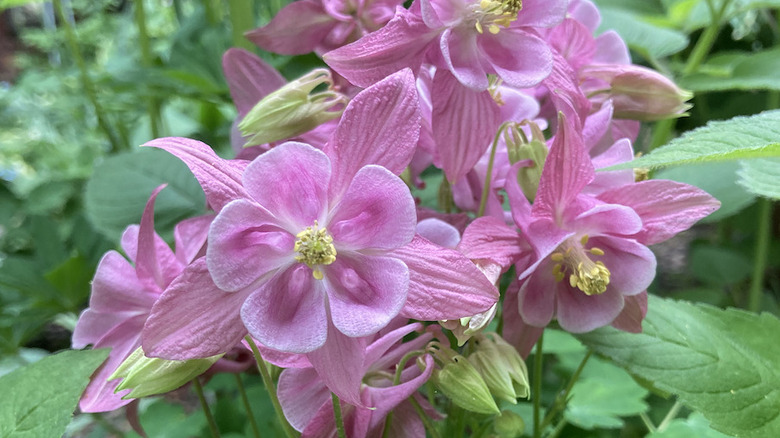25 Of The Prettiest Flowers In The World, According To Our Garden Pro
Beauty is in the eyes of the beholder, they say. No one knows this better than the gardener who plants flowers to fill the world with beauty. As a professional gardener, I usually design gardens featuring flowers that I personally find beautiful, while respecting my clients' preferences (unless their favorite flowers are poisonous or invasive). Some of the prettiest perennial and annual garden flowers out there, in my opinion, are peonies, bearded irises, tulips, roses, and hydrangeas, among many others.
Like many gardeners, my taste in flowers was formed at a young age. In my case, I was influenced by my mother's favorite annuals that she planted in her large rock garden, especially snapdragons, portulacas, and petunias. While perennials offer years of garden beauty, don't neglect annuals that flower for weeks or even months in season. Often, I find that a well-placed annual flower can bring just the right touch of color or vibrancy to a flower bed or container, and they're so easy to add.
One of my long-time clients, upon seeing my garden for the first time, exclaimed, "This looks like my yard!" because I've planted so many divisions of my own perennials for her. We have similar tastes, though she enjoys brighter, warmer colors more than I do (I prefer cooler colors and pastels). She also enjoys unusual shapes and textures, and her adventurous tastes encourage me to branch out. I try to be open-minded about a flower's potential to enhance my garden, even if I'm not in love with it at first: "Take a chance on me," they seem to say, so I do, and usually, I'm very glad I did.
Peony
I've always loved peonies (Paeonia), ever since I admired the deep crimson ones growing in the yard of our next-door neighbor when I was a kid. Peonies are very long-lasting, easy to grow (they need full sun), and come in a huge variety of sizes and colors, generally hardy from USDA Hardiness Zones 3 to 8. I love the fragrant ones, and some of my favorites are 'Sarah Bernhardt' (pale pink), 'Gardenia' (white), 'Sorbet' (hot pink and white), 'Coral Charm' (coral pink), and 'Monsieur Jules Elie' (medium pink).
Bearded iris
Two sweet old ladies in my neighborhood had at least a dozen different bearded irises (Iris germanica), and the first time I saw them all in bloom, I nearly fainted from joy. I swore in that moment (I was maybe 9 years old) I'd grow these beauties someday, and, well, I have a wider variety of bearded irises in my gardens than any other plant. Some of my favorites are: 'Champagne Elegance' (peach-white rebloomer), 'Quaker Lady' (lavender-buff heirloom), 'Blueberry Bliss' (deep blue, frilly), 'Lady Friend' (rose-garnet), and 'Florentine Silk' (pink-lavender). They are hardy down to zone 3.
Snapdragon
My mother planted these sprightly, colorful flowers every year, and showed us how to pinch the sides so they looked like a dragon's mouth. The only snapdragons (Antirrhinum majus) available then were the shorter annual varieties, but I've had very good luck with the taller varieties (like 'Rocket' and 'Chantilly') reseeding in my garden, behaving very much like perennials. They like full sun but will bloom in partial sun, too. They keep blooming after frost, so trim off the spent flowers and watch these beauties go until December, in the garden or in planters.
Dahlia
For weeks of show-stopping beauty, there's nothing like dahlias in the summer garden. They can be tall, short, big, small, spiky, or round, and are covered in colorful petals from summer to fall. They're not cold-hardy below zone 8, so you need to dig up and overwinter the tubers to replant in spring, or buy new ones each year. But dahlia lovers are not complaining. My favorite is the first one I ever grew: 'Thomas Edison', a magenta-purple heirloom "dinnerplate" dahlia. I also love 'Gallery Art Deco' (peach-red), 'Cafe au Lait' (mocha-cream), and the pink "cactus" dahlia 'Park Princess'.
Hydrangea
There are so many beautiful hydrangeas to grow! I love them all. Broadleaf hydrangeas (Hydrangea macrophylla) in shades of blue and pink do well for me, both mopheads and lacecaps. I also love panicle hydrangeas (Hydrangea paniculata) with their green, white, and rose-pink color show through the season. New hybrids are introduced often, but some of the heirlooms are most reliable. My favorites are 'Nikko Blue' (deep blue blooms), 'Bloomstruck' (pink, purple, and blue), 'Mini Mauvette' (tiny and mauve pink), 'Blue Enchantress' (pale blue), and 'Limelight' (pale green and creamy white).
Coneflower
Coneflowers (Echinacea) are fabulous perennials. They bloom for many weeks, are very low maintenance, and are a great way to attract pollinators and birds to your garden. The classic pink and white varieties are robust and popular, but there are many hybrids in a rainbow of colors and different forms. I love the pom-pom types like 'Marmalade' and 'Butterfly Kisses', but I also plant traditional coneflowers and leave the seed cones intact for winter's hungry birds. The 'Cheyenne Spirit' mix has gorgeous, vivid colors, including oranges, yellows, pinks, and reds. Coneflowers are generally hardy in zones 3 to 9.
Chrysanthemum
I'm one of those people who likes to grab smaller pots of discarded chrysanthemums, or mums, up off the curb on trash night, and plant them in my garden. I also order bare-root varieties in the spring from Bluestone Perennials, whose online selections are much larger than most garden shops. Once established as perennials, mums come up reliably in spring and are easy to divide. Plant them in full sun and water them regularly in the blooming season. My faves include 'Coquette' (pale pink), 'Chiffon' (pale peach-yellow), 'Amber Morning' (gold-peach), and 'Wild Berry' (rose pink), all of which are hardy in zones 5 to 9.
Rose
Roses are the queen of flowers, and if you ask me, no garden is complete without them. They're beautiful, a cultural symbol of love, and widely valued around the world, inspiring entire societies of rose devotees. Roses can be tricky: Some are vulnerable to pests or diseases, some have sharp thorns, and some require complicated care routines. I love fragrant, high-maintenance heirloom roses, but I also appreciate a low-maintenance, long-blooming Knockout rose. Some of my favorite roses are 'Crown Princess Margareta' (peach climber), 'Zephirine Drouhin' (hot pink climber), 'Tender Blush' (pale pink shrub rose), and 'White Dawn' (white climber).
Petunia
Petunias are blooming powerhouses that keep going all summer with a bit of deadheading. Mom loved petunias, and when I was young, there weren't anywhere near the range of varieties available then as there are now. I like to think my mom would be overjoyed by all the colors and varieties now on offer, so every year I design a planter of petunias in her memory. She liked purple and pink, so I always include some purple petunias like 'Daddy Blue', 'Alderman', or 'Evening Scentsation', along with some pale pink 'Dreams Appleblossom' or hot pink 'Neon Rose'.
Hibiscus
Not to be confused with tropical hibiscus (Hibiscus rosa-sinensis) or rose of Sharon (Hibiscus syriacus), the perennial or hardy hibiscus (Hibiscus moscheutos), also known as rose mallow, has huge saucer-shaped blooms with prominent stamens lasting for weeks in summer. Hardy in zones 4 to 9, if you cut back the branches in autumn, new growth will emerge in spring. I'm not a huge fan of red in the garden, but I love dark red hibiscus flowers for a dramatic punch of color. Try 'Midnight Marvel' (deep ruby red), 'Watermelon Ruffles' (rich red-pink), or 'Blackberry Merlot' (dark red).
Astilbe
Astilbes are great perennials for shade gardens, and provide a burst of color and dramatic form in summer in a range of heights. The frothy plumes have a delicate look, but this plant is fairly tough. It's hardy from zones 3 or 4 to 8 or 9. Some gardeners leave it intact through winter even after the flowers fade, because the texture and shape are so attractive. These flowers like a rich, moist, well-drained soil, and should be divided every three to four years. My favorites are 'Maggie Daley' (hot pink), 'Montgomery' (medium red), 'Milk and Honey' (cream), and 'Europa' (pale pink).
Globe thistle
These unusual flowers grow in a shrubby form but are actually an herbaceous perennial. Globe thistle (Echinops ritro) produces round, spiky, periwinkle blue flower heads in late summer. They look great in a large bed in front of taller flowers like hollyhocks or helenium, and the color is really unique. I like them planted near yellow, orange, and/or burgundy flowers for a striking color contrast. They don't need a lot of care, just deadheading and trimming (cut back in late winter), and they perform best in full sun. They are hardy in zones 3 to 8.
Japanese anemone
These nodding pink and white flowers sit atop tall stems with shapely leaves, and bloom in early autumn just as the fading garden could use a pastel pick-me-up. They range in color from white to deep rose pink. The 'Robustissima' variety is a hardy native that will reseed freely and blooms nicely in partial shade, hardy in zones 4 to 8. Alas, mine are currently getting some cold air damage from an HVAC contraption installed by a neighbor, so I have to replant them, but in general, these lovely flowers are sturdy and long-living in the garden.
Daffodil
Daffodils (Narcissus) are the warmly welcomed heralds of spring, bursting into sunny colors to remind us we made it through winter again. These bulbs increase each year and should be planted 8 inches deep in well-drained soil in full sun. Large clumps can be divided every few years: They just keep giving! There are hundreds of varieties in a range of color combos (yellow, orange, white, pink), shapes (trumpet, small and large cups, doubles), and sizes. My favorites are 'Decoy' (white-pink), 'Jetfire' (yellow-orange), 'Thalia' (white jonquil), 'White Lion' (fragrant, double yellow-white), and 'Salome' (yellow-peach).
English bluebell
I still haven't managed to see these blooming in an English wood, but it's on my bucket list. Though these fairytale flowers are native to Europe, you can buy English bluebells (Hyacinthoides non-scripta) to plant in the U.S. in zones 5 to 8. They emerge after grape hyacinths in spring and take a little time to get established. Don't confuse them with Spanish bluebells (Hyacinthoides hispanica), which have wider strappy leaves and slightly larger, paler blue flowers — those are pretty, but aggressively outcompete native plants. English bluebells multiply slowly and prefer a loamy, rich soil and partial or dappled shade.
Azalea
Azaleas are spring-blooming shrubs with large flowers and glossy green leaves. They're in the Rhododendron genus and are sometimes confused with them, but rhododendrons have much larger, globe-shaped flower heads. Azalea buds often seem to burst into bloom all at once, and sometimes a strong spring rainstorm can knock all the flowers off their branches, but that color show is glorious while it lasts! These pretty shrubs are perfect for a partial shade spot and love a slightly acidic soil; they are typically cold-hardy in zones 5 to 9. The range of flower colors is vast, including white, pink, yellow, orange, red, and purple.
Foxglove
These bold, beautiful flowers are gorgeous in a cottage garden, and they bloom well in partial shade. Foxgloves (Digitalis purpurea) are biennial, but once established in the garden, they may reseed to provide blooms every year. They range in size from a compact 12 inches tall to 4 feet or taller. The long tubular flowers covering the central stalks often have fetching interior spots, and colors include white, pink, peach, and purple. There's also a native pale yellow variety (Digitalis grandiflora) that lives for a few years in zones 3 to 8 and is a nice unassuming alternative to the larger, showier varieties.
Cosmos
Cosmos (Cosmos bipinnatus) are annuals grown from seed, and can be started indoors or direct sown in the garden. The most common varieties are pink, white, and crimson, but there are exciting new hybrids coming all the time. The lacy thread-like leaves complement the delicate flowers, but sometimes the stalks get thick and may need staking. There are vivid yellow and orange varieties (like 'Sunset Orange'), and some with frilly double flowers like 'Cranberries' (magenta red) or 'Rose BonBon' (candy pink). Pollinators love them, and they're a great addition to the vegetable garden to attract beneficial insects.
Delphinium
Delphiniums are enchanting flowers, producing stalks packed with daisy-like blooms in endless shades of blue, purple, pink, white, and lavender. Some get quite tall and may need staking for support. They like sun and prefer a slightly alkaline soil. Bee delphinium (Delphinium elatum) and 'Bellamosum' (Delphinium x belladonna) are gorgeous blues, and I love the range of pinks in Delphinium 'Centurion Rose Shades'. Expect these flowers to live for a few years in zones 3 to 7. They can be grown from seed, and will also reseed themselves.
Dianthus
I love the dianthus, or pinks, sold as annuals in nurseries in spring; they come in delightful color combinations of pink, white, and red, and bloom for three or four years in my garden before the foliage gets leggy. There's also the spreading perennial dianthus with slender blue-green leaves: The clumps grow about 2 feet wide and produce copious blooms (deadhead to encourage a second round). They come in many colors, and some have double petals like tiny carnations, complete with luscious light clove fragrance. My favorites are 'Firewitch' (hot pink), 'Bath's Pink' (pale pink), and 'Jan Louise' (two-tone pink), hardy from zones 3 to 8.
Bleeding heart
My mother mostly planted annuals, so discovering the beauty of perennials has been a delightful journey for me. But one perennial that she did grow was bleeding hearts (Lamprocapnos spectabilis), hardy in zones 3 to 9. No other flower has these unique heart-shaped blooms. These shade lovers really light up the spring garden, and after the flowers drop off, the foliage stays fresh until mid-summer. Classic varieties are hot pink and white or solid white, and there are newer hybrids with lovely color variations. There are also summer-blooming varieties, smaller plants with lacy leaves: My new fave is the deep burgundy 'Bacchanal'.
Gladiolus
Some gardeners associate certain plants with memories. For a long time I didn't really like gladiolus in the garden, because they reminded me of funeral arrangements. But after years of seeing their colorful, frilly blooms, I now enjoy planting them. These spring-planted annual corms are inexpensive, and there are many wonderful color choices: bright, pastel, bold, or subtle, there's something for every taste. I love 'Plum Tart' (bold magenta pink), 'Smokey' (pale mauve), 'Indian Summer' (dusty red), and 'Arcadia' (warm apricot).
Tulip
Who doesn't love tulips? These popular spring-blooming flowers come in hundreds of varieties: singles, doubles, lily-flowering, parrot, and more. Emperor tulips (Tulip fosteriana) and Darwin hybrids are the most likely to be perennial, typically in zones 3 to 8. But some gardeners just choose the ones they love best, possibly enjoying only one glorious season of bloom. My all-time favorites: 'Albert Heijn' (pink Emperor), 'Ballerina' (orange lily-flowering), 'Apricot Impression' (pink-peach Darwin hybrid), 'Blue Spectacle' (lavender-blue double), 'Daydream' (orange-yellow Darwin hybrid), and 'Barcelona' (fuchsia Triumph).
Windflower
These lovely daisy-like flowers come in a range of blues and violets, as well as pink and white. Windflowers (Anemone blanda) are planted as corms and slowly multiply over time, cold-hardy in zones 5 to 8. They like a rich, well-drained soil and are partial to full sun. They're diminutive but their color is very eye-catching, so plant them at the front of the border where they'll attract plenty of attention in mid-spring.
Columbine
Columbines (Aquilegia) are one of my favorite spring flowers. They reseed readily, and the different colors and forms hybridize, creating new varieties that are rather delightful to discover. The range of colors is vast, and the hybrid possibilities make the color range even more endless. I love the spiky 'Barlow' columbines (pink, crimson, blue, and deep purple), as well as the 'Songbird' and 'Origami' mixes. Some columbines have frilly, lacy layers of petals, while others have long slender points at their base. They bloom reliably in shade, and the flowers last for several weeks. They are hardy in zones 3 to 9.
